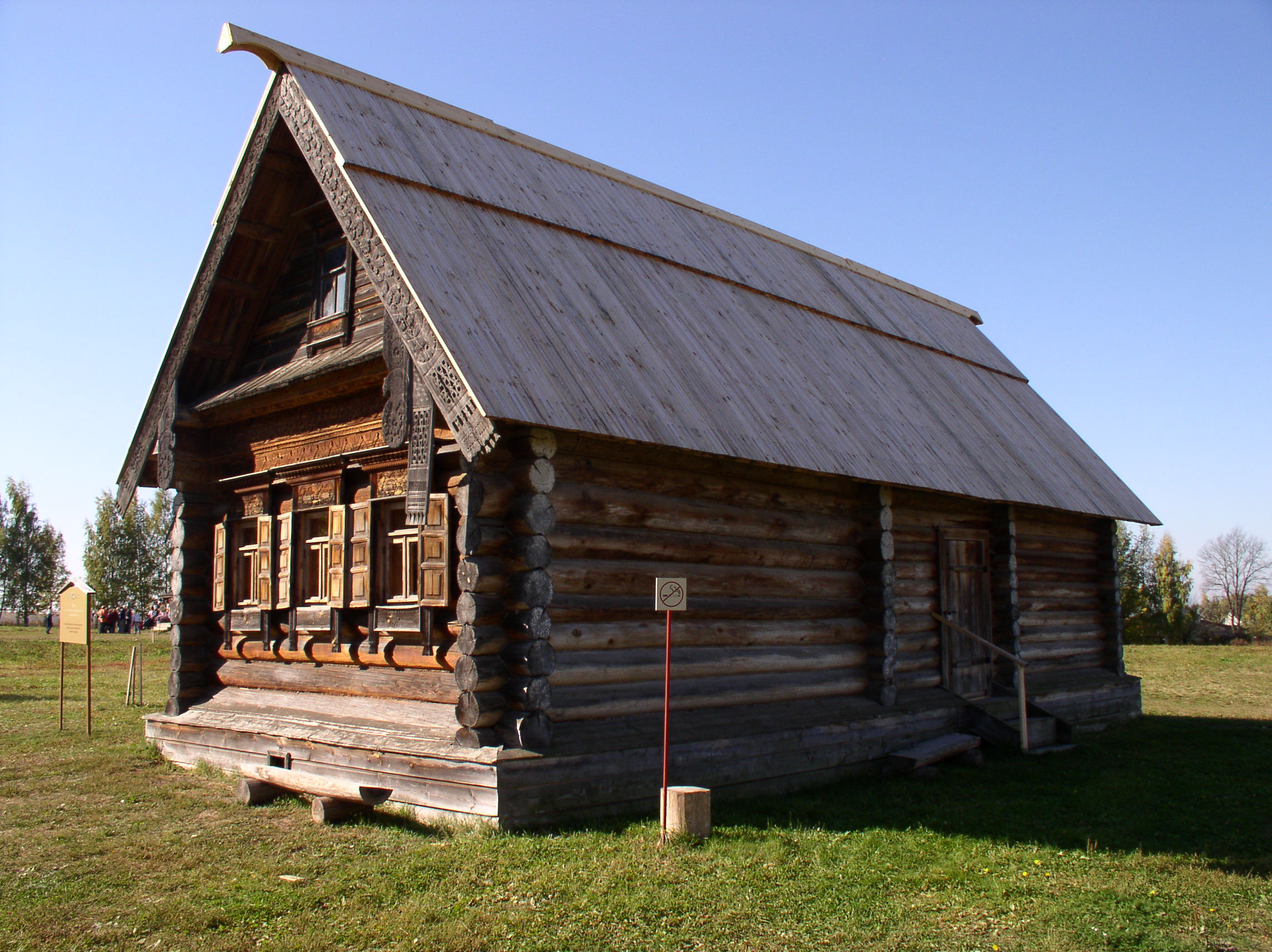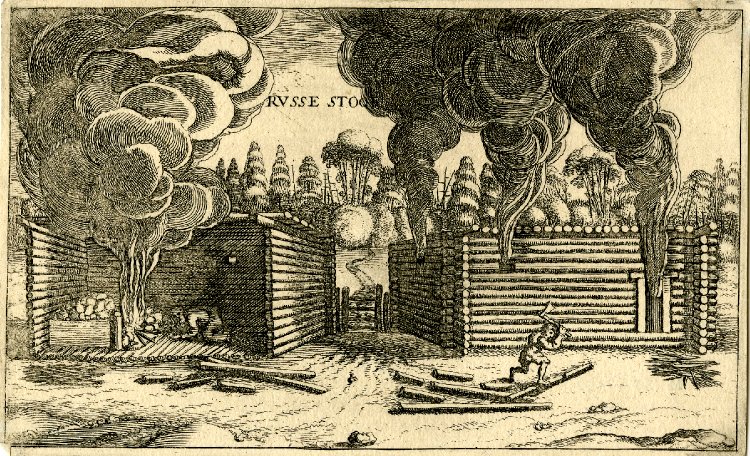Izba on:
[Wikipedia]
[Google]
[Amazon]


 An izba ( rus, изба́, p=ɪzˈba, a=Ru-изба.ogg) is a traditional Slavic countryside dwelling. Often a
An izba ( rus, изба́, p=ɪzˈba, a=Ru-изба.ogg) is a traditional Slavic countryside dwelling. Often a
Russian izba's Full HD photos
{{Russian souvenirs Houses in Russia Russian inventions House types Log buildings and structures


log house
A log house, or log building, is a structure built with horizontal logs interlocked at the corners by notching. Logs may be round, squared or hewn to other shapes, either handcrafted or milled. The term " log cabin" generally refers to a sm ...
, it forms the living quarters of a conventional Russian farmstead
A homestead is an isolated dwelling, especially a farmhouse, and adjacent outbuildings, typically on a large agricultural holding such as a ranch or station.
In North America the word "homestead" historically referred to land claimed by a set ...
. It is generally built close to the road and inside a yard
The yard (symbol: yd) is an English unit of length in both the British imperial and US customary systems of measurement equalling 3 feet or 36 inches. Since 1959 it has been by international agreement standardized as exactly ...
, which also encloses a kitchen garden
The traditional kitchen garden, vegetable garden, also known as a potager (from the French ) or in Scotland a kailyaird, is a space separate from the rest of the residential garden – the ornamental plants and lawn areas. It is used for grow ...
, hay shed, and barn
A barn is an agricultural building usually on farms and used for various purposes. In North America, a barn refers to structures that house livestock, including cattle and horses, as well as equipment and fodder, and often grain.Alle ...
within a simple woven stick fence
A fence is a structure that encloses an area, typically outdoors, and is usually constructed from posts that are connected by boards, wire, rails or netting. A fence differs from a wall in not having a solid foundation along its whole length.
...
. Traditional, old-style izba construction involved the use of simple tools, such as ropes, axes, knives, and spades. Nails were not generally used, as metal was relatively expensive, and neither were saws a common construction tool. Both interior and exterior are of split pine tree trunks, the gap between is traditionally filled with river clay, not unlike the North American log cabin
A log cabin is a small log house, especially a less finished or less architecturally sophisticated structure. Log cabins have an ancient history in Europe, and in America are often associated with first generation home building by settlers.
Eur ...
.
The dominant building material of Russian vernacular architecture
Vernacular architecture is building done outside any academic tradition, and without professional guidance. This category encompasses a wide range and variety of building types, with differing methods of construction, from around the world, bo ...
, and material culture
Material culture is the aspect of social reality grounded in the objects and architecture that surround people. It includes the usage, consumption, creation, and trade of objects as well as the behaviors, norms, and rituals that the objects crea ...
generally, for centuries was wood. Specifically houses were made from locally-cut rough-hewn logs, with little or no stone, metal, or glass. Even churches and urban buildings were primarily wooden until the eighteenth century.Hosking, 7
All of the building's components were simply cut and fitted together using a hand axe. Coins, wool, and frankincense
Frankincense (also known as olibanum) is an aromatic resin used in incense and perfumes, obtained from trees of the genus '' Boswellia'' in the family Burseraceae. The word is from Old French ('high-quality incense').
There are several species ...
were customarily placed beneath the corners of the house as an expression of the superstition that doing this would make the people living there healthy and wealthy.
From the fifteenth century on, the central element of the interior of izba was the Russian stove, which could occupy up to one quarter of the floorspace in smaller dwellings. Often there were no beds (in the Western sense) for many members of the household, as people would sleep directly on the plaster top of the oven, or on shelves built directly above the stove.Hosking, 8
The outside of izbas was often embellished by various special architectural features, for example the rich wood carving decoration of windows. Such decorative elements and the use of the Russian stove are still commonly found in many modern Russian countryside houses, even though only the older wooden houses are called izbas today.
An alternative word for "izba" in Russian is "khata" (хата), which is the word in most Slavic languages for any cottage or small house (including Belarusian, Polish, and Ukrainian). According to historian of Russia Geoffrey Hosking Geoffrey, Geoffroy, Geoff, etc., may refer to:
People
* Geoffrey (name), including a list of people with the name
* Geoffroy (surname), including a list of people with the name
* Geoffrey of Monmouth (c. 1095–c. 1155), clergyman and one of the m ...
, starting in the eighteenth century khata was used in to refer to cottages on the tree-poor southern steppes which used logs only for the framing, and then used wattle-and-daub as infill covered with a plaster and whitewash exterior. However, generally this wattle-and-daub house is called "mazanka
The Mazanki is a type of Slavic folk musical instrument that belongs to a group of idiophones or string instruments. They were particularly popular in regions of Poland Greater Poland and in Lubusz Land and usually used along with bagpipes
...
" (мазанка) and khata is not necessarily a mazanka.
See also
*Log building
Log buildings and structures can be categorized as historic and modern. A diverse selection of their forms and styles with examples of architectural elements is discussed in the following articles:
*Log cabin – a rustic dwelling
*Log house – a ...
References
External links
Russian izba's Full HD photos
{{Russian souvenirs Houses in Russia Russian inventions House types Log buildings and structures